 Leading Blog | Posts by Month |
 Leading Blog | Posts by Month |
01.31.13

LeadershipNow 140: January 2013 Compilation
See more on
Posted by Michael McKinney at 12:12 AM
01.28.13

It’s Never About the Bike: A Lesson from Lance Armstrong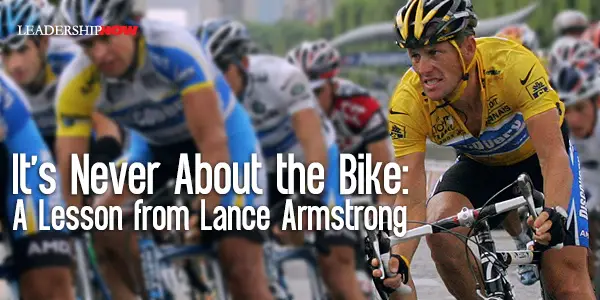
LANCE ARMSTRONG once wrote: “I believed I had a responsibility to be a good person, and that meant fair, honest, hardworking and honorable. If I did that, if I was good to my family, true to my friends, if I gave back to my community or to some cause, if I wasn't a liar, a cheat, or a thief, then I believed that should be enough.” Often we begin the race with solid values. We begin with values that drive our behavior based on intrinsic rewards. But over time, something can happen if we are not careful. Competitive pressures weigh on us. The chance for extrinsic rewards like money and power loom larger. If we have not built the strength of character to resist those temptations, we can easily become the person we don’t recognize.  The fact is, success changes nothing. Our legacy is built on the how not the what. It’s never about the bike. Without a strong hold on intrinsic values like humility, respect, truthfulness, patience and honor, we leave the door open for corruption and fraud. Changing what we value, changes everything. More to the point, it changes the choices we make. Choices build the life we lead and the legacy we leave. When it’s all about the win, we lose. Good values and solid character build a firm foundation for wins that can’t be taken away. 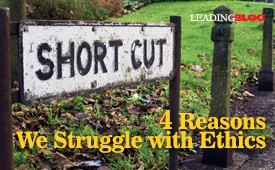 
Posted by Michael McKinney at 11:09 PM
01.24.13

Remember, It Was Once Someone’s Good Idea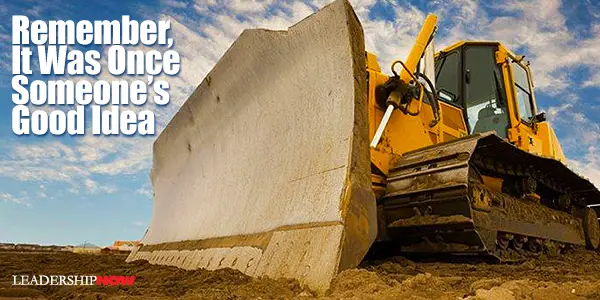
MANY, if not most good ideas are not good forever. Over time they lose the luster they once had. They become irrelevant and ineffective. The universal danger we all face, is that we get so comfortable with what we do that never recognize that moment when it no longer serves the why. So it is good to periodically take a look at why we do what we do. But it is important to remember that they were once good ideas. Someone once fought to get the idea implemented that you are now trying to change. When we want to change the status quo, we need to approach it from the knowledge that someone had a good reason to make the decision they made. We should honor that. If we approach it in a way that is adversarial, judgmental or dismissive, we diminish and dishonor ourselves and others. When advocating a change, we need to be sure we are informed with the thinking behind the decisions of those that have come before us. When we do, we demonstrate that we are: Reasonable. We see the value in taking advantage of the experience of others.
People are more likely to look at your vision if they know that you have first taken the time to understand theirs. It promotes trust and creates a connection from which to lead.
Posted by Michael McKinney at 04:56 PM
01.21.13

5 Things Smart Risk Takers Do Well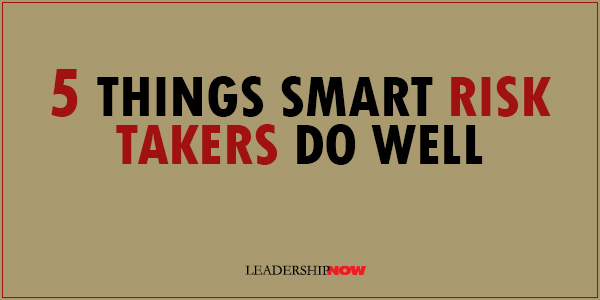 Doug Sundheim’s book, Taking Smart Risks, isn’t really about making your next risky decision smarter or safer; it’s about pushing all of your choices to be riskier, but smarter on a daily basis.
Doug Sundheim’s book, Taking Smart Risks, isn’t really about making your next risky decision smarter or safer; it’s about pushing all of your choices to be riskier, but smarter on a daily basis.
We tend to view our choices as risky or safe. Safe is good while risky is well, risky. You’re taking a chance with a risky choice; it could lead to ruin. Sundheim says that view doesn’t capture the essence of what taking a risk is all about. Taking a risk is “exposing oneself to the possibility of loss or injury in the hopes of achieving a gain or reward.” It’s really the reason we would consider taking a risk rather than just playing it safe. It’s not an either/or proposition—safe or risky. But because we perceive it that way, we tend to do all we can to avoid risk and stay in our comfort zone. 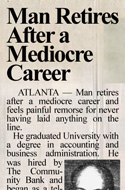 • You don’t win.
Are you caught in the comfort zone? Here’s a thought we can all relate to: Being caught in the comfort zone doesn’t mean that you’re sitting around doing nothing. It’s more nuanced than that. You could be making progress, but not quickly enough. You could be taking chances, but not boldly enough. You could be going out on a limb, but not far enough, and the extra push is what will make a difference. What Sundheim is advocating is a change in our mindset regarding risk. Rather than perceiving risk as negative (“Things may not be perfect now, but they’re not all that bad. If I make a move, things could end up worse. I’d better not risk it.”), we should view it as a balanced focus on both the downside of taking risks and not taking risks (“I’ll regret it if I don’t pursue this thing. I’ve got to find some smart ways to take risks to move it forward.”). A limiting mindset versus a liberating mindset.
Smart risk takers consistently do five things well to disrisk whatever they’re up to:
Communication is a critical element of each of these stages. “At every stage of any risk, improving the way in which you discuss thoughts, plans, and actions is the single most effective way to derisk the risk, that is, to make it smart.”

Posted by Michael McKinney at 10:34 PM
01.17.13

At Work, "Yes" is Great, but at Times "No" is Even Better At work, we want our jobs, assignments, projects and "stuff" to move along smoothly: achieving objectives, getting promoted, winning contracts. It's almost a twitch reflex to want our jobs to behave themselves. And if we are honest, sometimes we may even secretly wish that the workplace could deliver a continuous, uninterrupted "yes"—"yes" I got the plum job; "yes" the budget was approved; "yes" the redesign has been accepted. And not only do we want "yes" from our jobs, we also want to deliver "yes" in return - especially when results are expected: "yes" we can deliver doubled digit growth; "yes" we'll exceed the deadline and come in under budget; "yes" we can close the deal. But, as we all know, work doesn't behave this way. It's far too unruly: deadlines are too tight, salary increases are too small, business deals wither. And often instead of saying hello to "Yes", we find "No" at the front of the line offering personnel conflicts, career disappointments and project derailments. But rather than treating "no" as an annoying intruder on our journey to "yes", maybe we could take a different approach—maybe "no" isn't such a bad guy after all—maybe "no" is exactly what we've been looking for. And here are three reasons why. Emphasizing "yes" can dull our edge When we impulsively look for "yes" from our subordinates, colleagues, vendors and others, we tend to emphasize harmony over clarity; convenience over excellence; perception over results. Such seeming harmony can dull a team's creative edge and mask issues that need our attention. Are we emotionally confident enough to hear the facts rather than a "managed narrative"? Do we rush past problems in order to get to a solution or can we linger and explore difficulties thoroughly? Do we invite "no" from others when we sense that it is being held back? When we appreciate the importance of "no", convenience becomes irrelevant, our intelligent "edge" is permitted to clarify problems and getting a realistic picture takes priority. Avoiding "no" represses candor and causes team problems It is typical for team members to test boundaries and try to form reliable relationships and inevitably, such testing creates friction where individuals say "no" to certain group demands and limits. We all know what this looks like: Why does Sally get to lead this effort, why not me? Those budget estimates are way too low, but no one listens to me. I authored the sales plan, why can't I present it? When we are uncomfortable with the emotions accompanying such conflict, we may tend to avoid the required candor, hurrying toward a false "yes" of familiar routines and politeness. When teams choose avoidance over candor, we can end up repressing feelings that later arise as simmering frustrations or at times active resistance. Too often, by avoiding "no" we disguise problems rather than solve them. "No" creates much needed psychological space Finally, when we are constantly chasing "yes" -- trying to become smarter, faster, cheaper, and more profitable -- we can at times speed past the very things that need our attention. Such speed to succeed can blind us, but "no" can slow us down and offer some psychological space: Can we describe the top three difficulties our customers are having with the new release 4.0? What is the employment turnover with our key sales folks and should it be lower? What are the three main motivators for our medical affairs physicians and are we focusing in on them? These and hundreds of other similar business questions require us to slow down in our relentless pursuit of "yes" and consider "no" as an ally. And when we make friends with "no", we discover psychological space and time to reflect, not just on where we are going but, as importantly, on how we are getting there. So, in the end work is very much about "yes" -- "yes" I can take that stretch assignment; "yes" I'll work extra hours; "yes", the project is on track. But if work is all about "yes", chances are we are avoiding some vital issues, and we may need to make friends with "no". Michael Carroll, author of Fearless at Work, worked on Wall Street and in the publishing industry for over two decades, holding executive positions at Shearson Lehman Brothers, Paine Webber, Simon & Schuster, and the Walt Disney Company. Founding director of AAW Associates, Carroll consults with major corporations on bringing mindfulness into the workplace. He is a longtime student of Buddhist meditation and an authorized teacher in the lineage of Chögyam Trungpa. Carroll has taught mindfulness meditation at the Wharton School of Business, Columbia University, Kripalu, and the Cape Cod Institute. For more information please visit http://www.awakeatwork.net, and follow the author on Facebook and Twitter. 
Posted by Michael McKinney at 09:25 PM
01.14.13

Why We Find it Hard to Change Our Behavior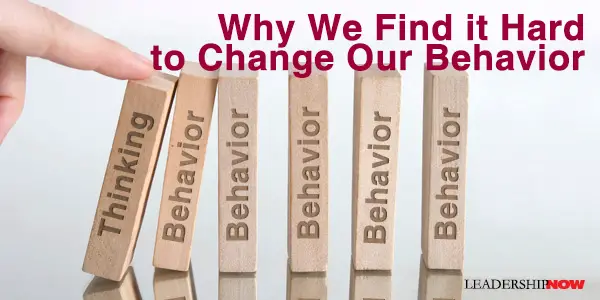
WE KNOW every behavior begins with a thought. So if we want to have lasting change, the beginning point has to be our thinking. Behavioral change is only surface change if we don’t first change the thinking behind those behaviors. And it won’t stick. It will keep coming out in so many ways we won’t be able to keep up with it because we haven’t changed the thinking behind it. When we look at our behavior we have to understand that there is a thought going on in our heads that is tripping us up. And we have to change that first. Or we’re working on the wrong thing. The question becomes, “What thoughts do I need to change to make my behavior change?” New behavior will automatically follow a change in thinking. One right thought can correct a lot of bad behavior. What am I thinking that isn’t allowing me to see things as I should? As human beings, we latch on to certain ideas and assumptions and they blind us from seeing other options and responses to what life throws at us. We get ideas in our head that can literally block us from seeing other perspectives. Change doesn’t happen in a moment. We’ve had these patterns of thinking and behavior for a lot of years. We have to unlearn some behaviors and then learn and put into practice the new thinking and resulting behaviors. And it just takes time. It’s right thinking over time that brings about lasting change. It’s a process. It’s a long history of repeated behaviors in the same direction that builds character. We have to wake up every day and know that we have a tendency—not just because of our life experiences, but also because of the way that we have chosen to respond to them—to repeat a certain set of behaviors over and over again. We’ve got to remember that and change the thinking that supports these behaviors. We’ve got a lot of set patterns in our heads that we want to return to, that we have become comfortable with, that we can justify, that we can blame on something someone else did. That’s why we have to make a point of reflecting on our behaviors and on the impact we have on the people around us. And learn from it. And then go to work on the thinking behind the behaviors we want to change. It’s not what you do that needs to change, it’s what you think that needs to change. First change your thinking. The behavior will follow. It all starts with a thought.
Posted by Michael McKinney at 06:13 PM
01.10.13

The Secret to Leadership Growth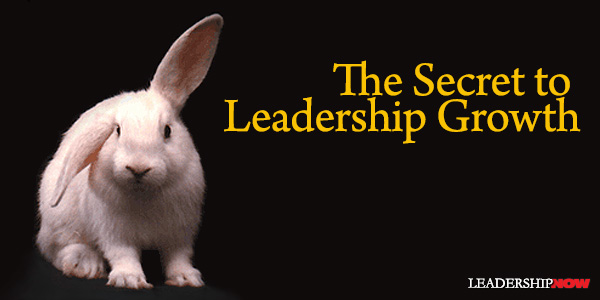
THE NUMBER ONE way leaders grow is by listening. Leadership feels like a talking role, but it is predominately a listening role. That can be hard to accept. It feels counterintuitive. A leadership role often makes us feel like we should be talking all the time; like we’re the most important person in the room. We’re not. Listening takes us outside our own heads. It gives us a chance to see things from a different perspective. It creates options. It creates the space for serendipity. Listening takes us beyond our egos. Without it we begin to miss very elementary things. When we miss elementary things we crash and burn in a self-made morass of complexity. Listening clarifies. Listening renews and refreshes. Without it we get stuck and tedious. When we help others grow, we grow. Leaders guide people and then listen. Listening is the best way to turn someone from a victim (of your talk) to a supporter of your idea. Listening gives others the chance to take ownership. Listening is the catalyst for making individuals a community. Listening creates the space for leadership.
Posted by Michael McKinney at 09:53 AM
01.08.13

Antifragile or How We Become Fragile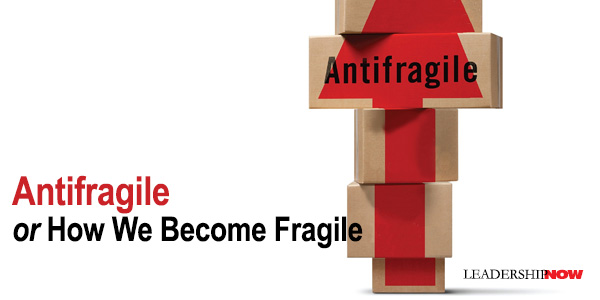
IN Antifragile, Nassim Nicholas Taleb reports on things that are fragile and things that are antifragile and how they became that way. Taleb says antifragile isn’t resilience given his narrow definition of it. It’s more. Resilience survives. Things that are antifragile don’t just survive, they get better with random event and shocks. The opposite is fragile. Though often unintentionally, we tend to make things fragile. We have been fragilizing the economy, our health, political life, education, almost everything … by suppressing randomness and volatility. … Complex systems are weakened, even killed, when deprived of stressors. Much of our modern, structured, world has been harming us with top-down policies and contraptions which do precisely this: an insult to the anitifragility of systems. By trying to make things simple and linear we run the risk of underestimating randomness and its role in everything. And more importantly, we fail then to benefit from them. Thus while we may be resilient or robust, we are not antifragile. “You only get a measure of order and control when you embrace randomness,” says Taleb. Our character should be antifragile. Random events should serve to make you better than before. Rules are fragile. Principles are resilient. Virtue is antifragile. Classroom learning is fragile. Real-life and experiential knowledge are resilient. Real-life and a library are antifragile. Success actually makes us fragile. We need to be antifragile to survive it. “When you are fragile, you depend on things following the exact planned course, with as little deviation as possible—for deviations are more harmful than helpful.” Mistakes and successes—especially those of others—give us a lot of information. If we can learn from them, they can make us antifragile. Taleb writes: My characterization of a loser is someone who, after making a mistake, doesn’t introspect, doesn’t exploit it, feels embarrassed and defensive rather than enriched with a new piece of information, and tries to explain why he made the mistake rather than moving on. These types often consider themselves the “victims” of some large plot, a bad boss, or bad weather. Randomness is not a bad thing. We make our organizations fragile when we are overprotective; when we try to iron out all of the variations and wrinkles that are a part of life. The longer we go without randomness, without variations, without setbacks, the worse the consequences when the unpredictable occurs. “Preventing noise makes the problem worse in the long run.” Yet we still think we benefit from protecting people and organizations from volatility—from life. It’s a practice with unintended yet harmful side effects. A fact of life: “no stability without volatility.” A little confusion can lead to teachable moments, growth and stability. Antifragile is an interesting and at times entertaining read. Taleb borrows from all disciplines to explain “how to live in a world we don’t understand or, rather, how not to be afraid to work with things we patently don’t understand, and, more principally, in what manner we should work with these.” 
Posted by Michael McKinney at 10:00 PM
01.01.13

First Look: Leadership Books for January 2013Here's a look at some of the best leadership books to be released in January.




For bulk orders call 1-800-423-8273  Build your leadership library with these specials on over 120 titles. All titles are at least 40% off the list price and are available only in limited quantities. “Today a reader, tomorrow a leader.” — Margaret Fuller
Posted by Michael McKinney at 12:00 AM
|
BUILD YOUR KNOWLEDGE


How to Do Your Start-Up Right STRAIGHT TALK FOR START-UPS 
Grow Your Leadership Skills NEW AND UPCOMING LEADERSHIP BOOKS 
Leadership Minute BITE-SIZE CONCEPTS YOU CAN CHEW ON 
Classic Leadership Books BOOKS TO READ BEFORE YOU LEAD |
|